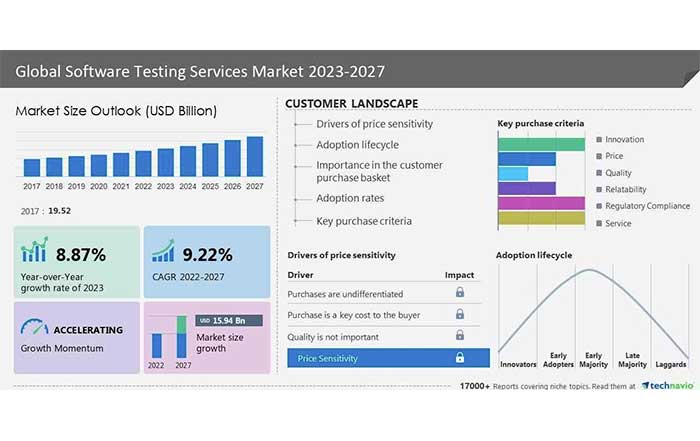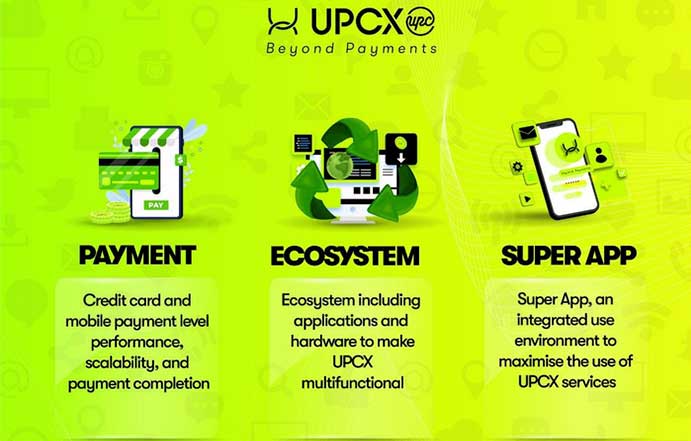The global banking industry shows traditional financial infrastructure is merging with digital-first ecosystems that prioritize speed, security, and innovation, and at the heart of this transformation lies the concept of the Digital Asset Service Hub, a comprehensive platform that enables banks to manage, trade, store, and provide services around digital assets, including cryptocurrencies, tokenized securities, stablecoins, and central bank digital currencies. The adoption of these hubs is no longer experimental; it has become an essential strategy for banks that want to remain competitive in a rapidly evolving financial marketplace.
For financetechx.com, this subject captures the essence of global fintech progress, as it ties together technology, compliance, risk management, and customer trust in ways that shape the very future of banking. Unlike past incremental changes, the digital asset era is disruptive at its core, creating entirely new revenue streams and altering long-standing financial hierarchies.
Evolution of Digital Assets in Banking
The rise of cryptocurrencies like Bitcoin and Ethereum initially created uncertainty within the financial sector. However, the market quickly matured with the introduction of stablecoins such as USDC and the development of central bank digital currencies (CBDCs) in regions like Europe, China, and the United States. Banks, once hesitant, began to explore how to integrate digital assets into existing financial systems.
By 2025, regulators across North America, Europe, and Asia have laid down clear frameworks, offering banks an opportunity to confidently develop structured services. The Bank for International Settlements (BIS) and institutions like the European Central Bank have guided this regulatory path, ensuring that systemic risks are managed while innovation continues to flourish.
The Digital Asset Service Hub evolved as a response to banks’ need for a single, compliant, and secure infrastructure that could handle a wide array of digital asset services under one roof. This framework allows banks to move beyond experimentation and establish themselves as trusted providers in an industry where trust and credibility remain paramount.
Core Functions of a Digital Asset Service Hub
A fully developed Digital Asset Service Hub brings together several core functions that empower banks to offer a broad spectrum of digital services. Custody of assets remains one of the most crucial pillars. Secure storage of cryptocurrencies, tokenized securities, and CBDCs requires institutional-grade security systems, integrating advanced encryption, multi-signature wallets, and blockchain-based proof of reserves.
Another central function is trading and settlement, where the hub connects banks to digital exchanges, token marketplaces, and decentralized finance protocols, providing clients with seamless access to liquidity while ensuring settlement finality in near real time. Furthermore, the hub enables token issuance and management, supporting banks that wish to issue asset-backed tokens such as tokenized real estate, bonds, or commodities.
Compliance and reporting form the backbone of the hub, ensuring alignment with regulations such as the Financial Action Task Force (FATF) Travel Rule and anti-money laundering directives. Automated reporting and real-time monitoring provide transparency and allow regulators to access necessary oversight without slowing innovation.
For banks, integrating all these services into a unified hub offers a powerful competitive edge, enabling them to differentiate from both traditional peers and fintech disruptors.
The Competitive Landscape in 2025
The race to develop Digital Asset Service Hubs is now global. In the United States, leading banks like JPMorgan Chase and Goldman Sachs have already rolled out institutional digital asset platforms, while in Europe, banks in Switzerland and Germany are leading the tokenization of financial instruments. In Asia, Singapore and South Korea have emerged as leaders in deploying national-scale digital asset hubs, attracting both domestic institutions and international investors.
For regions such as the United Kingdom and Canada, the focus has been on creating balanced ecosystems where banks partner with fintech firms to deliver integrated services without losing regulatory oversight. The Middle East, particularly the United Arab Emirates, has also positioned itself as a digital asset hub, appealing to both established banks and startups.
Competition is fierce, not just among banks but also between banks and non-bank entities. Companies like Coinbase, Binance, and Circle offer services that overlap with what banks traditionally provided, pushing financial institutions to accelerate their adoption of digital hubs. The line between fintech and traditional banking continues to blur, creating an environment where partnerships, acquisitions, and co-investment in infrastructure have become the norm.
Digital Asset Service Hub Interactive Timeline
Evolution of Banking's Digital Transformation
Early Exploration
Banks begin exploring cryptocurrency integration and blockchain technology for internal processes.
Regulatory Frameworks
BIS and ECB establish clear guidelines. Major banks like JPMorgan launch institutional crypto platforms.
CBDC Development
Central Bank Digital Currencies emerge in Europe, China, and US. Tokenization of real estate and bonds accelerates.
AI Integration
Banks integrate AI-powered analytics for compliance, fraud detection, and personalized digital asset portfolios.
Hub Maturity
Digital Asset Service Hubs become essential. Global competition intensifies between traditional banks and fintech.
Future Integration
Complete convergence of digital and traditional finance. Banks lead sustainable tokenized green finance initiatives.
Current Progress: Digital Asset Service Hubs in 2025
Regulatory and Security Imperatives
For banks, trust is everything. The rollout of a Digital Asset Service Hub depends not only on technological readiness but also on the ability to operate in compliance with strict regulations. In 2025, banks must navigate requirements from multiple jurisdictions while maintaining consistent global operations.
In the United States, the Securities and Exchange Commission (SEC) and the Commodity Futures Trading Commission (CFTC) are taking active roles in supervising tokenized assets and exchanges, while Europe’s Markets in Crypto-Assets (MiCA) Regulation provides clarity on licensing and custody requirements. Meanwhile, Asian regulators in Japan, Singapore, and Hong Kong have created frameworks designed to encourage adoption while protecting investors.
Security remains non-negotiable. Banks are required to implement zero-trust security frameworks, integrate real-time threat detection systems, and ensure blockchain audit trails for every transaction. Collaboration with cybersecurity leaders has become a necessity, as banks are prime targets for sophisticated cyberattacks.
Learn more about financial security and how it integrates with digital innovation.
Integration of AI and Digital Asset Service Hubs
Artificial intelligence has become a cornerstone technology in the success of Digital Asset Service Hubs. In 2025, banks that integrate AI-powered analytics into their digital infrastructure are better positioned to identify suspicious activities, personalize customer offerings, and optimize asset management strategies. AI-driven compliance systems can monitor thousands of transactions per second, flagging anomalies that could indicate fraud, money laundering, or market manipulation, while simultaneously reducing the cost of human oversight.
Beyond compliance, AI is now powering predictive investment tools that analyze real-time blockchain data, global economic indicators, and client behavior patterns to recommend digital asset portfolios. The role of AI extends further into customer experience, where conversational banking assistants help users understand tokenized products, assess risks, and even execute transactions seamlessly. These intelligent systems make digital asset services more approachable to mainstream clients who may otherwise be hesitant to adopt new financial technologies.
The strategic importance of AI in this space cannot be overstated. As competition among banks and fintech firms intensifies, those that successfully combine digital asset hubs with AI-driven insights will create unparalleled customer experiences. Explore how AI is reshaping financial services and driving trust in digital innovation.
Tokenization Opportunities for Banks
The concept of tokenization is one of the most transformative opportunities within a Digital Asset Service Hub. Banks in 2025 are no longer limiting themselves to traditional securities or cryptocurrencies. Instead, they are tokenizing real-world assets including commercial real estate, government bonds, private equity stakes, and even luxury goods such as art and collectibles.
By creating tokenized versions of these assets, banks enable fractional ownership, reduce settlement times, and open up previously illiquid markets to a global pool of investors. For instance, tokenized real estate projects in Germany and Singapore now allow retail and institutional investors to purchase fractions of high-value properties, democratizing access to markets once reserved for the elite.
Moreover, tokenization supports the rise of green finance. Banks can issue tokenized carbon credits, renewable energy certificates, and sustainability-linked bonds, providing transparency and verifiability to environmental commitments. These solutions align with the growing global push toward sustainable finance and enable banks to take a leadership role in advancing climate-conscious investment strategies. Learn more about sustainable business practices and how tokenization enhances environmental finance.
Customer Adoption and Experience
The success of any financial innovation hinges on customer trust and adoption. Banks offering Digital Asset Service Hubs in 2025 must focus on providing clear value to both retail and institutional clients. For retail customers, transparency, education, and user-friendly platforms are essential. Banks have started integrating digital asset services directly into mobile banking apps, allowing clients to view, trade, and store tokenized assets alongside their traditional holdings.
For institutional investors, the emphasis lies on regulatory clarity, compliance assurance, and seamless integration with existing treasury and risk management systems. By providing robust custody, settlement, and reporting tools, banks can address the concerns of institutional players who seek stability in a fast-moving market.
The customer experience also depends heavily on interoperability. Banks are adopting open banking principles, ensuring that digital asset hubs connect seamlessly with external platforms such as decentralized exchanges, payment processors, and accounting tools. This interconnected ecosystem strengthens client confidence and reduces the friction that has historically slowed digital asset adoption.
Explore fintech innovation to understand how user experience remains central to adoption across all sectors.
Global Economic Implications
The integration of Digital Asset Service Hubs into mainstream banking has far-reaching economic implications. In the United States and Europe, tokenization of capital markets could unlock trillions of dollars in value by improving liquidity and reducing inefficiencies in trading and settlement. Emerging markets such as Brazil, South Africa, and Thailand are also leveraging digital asset hubs to attract foreign investment and accelerate economic modernization.
The ability of banks to facilitate cross-border digital transactions at scale reshapes international trade. Settlement times that once took days are now reduced to minutes, allowing businesses to operate with greater efficiency and less reliance on intermediaries. In countries with high remittance flows such as the Philippines and India, banks leveraging digital hubs provide faster and cheaper transfer options, improving financial inclusion and reducing reliance on unregulated channels.
At the macroeconomic level, the adoption of central bank digital currencies through bank-led service hubs enhances monetary policy effectiveness. Central banks gain better visibility into money supply and capital flows, while commercial banks act as critical intermediaries ensuring compliance and stability. Read more about global economic dynamics and how digital assets are shaping policy and trade.
Banks as Trusted Digital Custodians
Trust remains the ultimate differentiator for banks in the digital asset era. While fintech companies have innovated rapidly, they often lack the centuries-old reputations that banks bring to the financial services landscape. By acting as custodians of digital wealth, banks leverage their history of fiduciary responsibility and combine it with cutting-edge blockchain technology.
Clients are increasingly willing to entrust their digital assets to banks because of institutional-grade protections such as insured custody accounts, transparent reporting, and strict adherence to regulatory standards. Banks also benefit from scale, as their ability to invest heavily in compliance infrastructure, cybersecurity, and cross-border partnerships creates a safer environment for clients.
Moreover, banks that establish themselves as trusted digital custodians can expand into adjacent opportunities. These include advisory services on tokenized portfolios, wealth management offerings that blend digital and traditional assets, and consulting services for corporate clients exploring blockchain-based financing models.
Jobs and Talent Transformation in the Digital Asset Era
The emergence of Digital Asset Service Hubs is reshaping the financial sector workforce. Banks that once focused primarily on traditional financial products now require professionals with expertise in blockchain development, smart contract auditing, cybersecurity, regulatory compliance, and tokenized asset management. By 2025, job descriptions at leading banks increasingly reflect hybrid roles that merge financial expertise with deep technological understanding.
Recruitment strategies are shifting accordingly. Banks are partnering with universities and specialized training providers to establish talent pipelines for digital finance. The rise of fintech education programs has given professionals the opportunity to retrain and acquire skills that align with the new market realities. As demand for digital asset specialists grows, the competition for skilled talent has intensified, particularly in global financial hubs such as New York, London, Frankfurt, Singapore, and Hong Kong.
The impact extends beyond technical roles. Relationship managers, compliance officers, and investment advisors now need to understand how digital assets interact with broader financial strategies. This requires a cultural shift within banking organizations, emphasizing continuous learning and adaptability. Discover more about fintech jobs and how talent transformation is driving industry competitiveness.
Integration of Crypto into Banking Services
Cryptocurrencies, once viewed as rivals to traditional banking, are now becoming embedded within Digital Asset Service Hubs. Banks in 2025 offer clients direct access to leading cryptocurrencies such as Bitcoin and Ethereum, along with regulated stablecoins like USDC and Tether. By integrating crypto custody and trading services into existing infrastructure, banks are capturing demand that was once dominated by independent exchanges.
This integration is not limited to speculative trading. Banks are enabling clients to use cryptocurrencies for cross-border payments, collateral in lending arrangements, and as part of diversified investment portfolios. Institutional investors, in particular, are increasingly comfortable with allocating a portion of their assets to cryptocurrencies, thanks to the risk management frameworks banks provide.
The role of banks in crypto adoption also strengthens overall trust in the ecosystem. By offering insured accounts, transparent compliance reporting, and integration with fiat-based services, banks reduce the uncertainty that has historically discouraged mainstream participation in the crypto economy. Learn more about cryptocurrency adoption and how banks are accelerating its legitimacy.
Modernization of Stock Exchanges through Tokenization
The impact of tokenization extends deeply into capital markets. Stock exchanges around the world are embracing blockchain technology to improve efficiency, transparency, and global access. The London Stock Exchange, Singapore Exchange, and Deutsche Börse have already piloted tokenized trading systems, where equities and bonds are represented as digital tokens that can be traded and settled in near real time.
Banks operating Digital Asset Service Hubs are playing a crucial role in this modernization by acting as custodians, brokers, and settlement agents for tokenized securities. This evolution reduces settlement risk, lowers transaction costs, and improves liquidity for both retail and institutional investors. Tokenized exchanges also open new opportunities for small and medium-sized enterprises that previously struggled to access capital markets due to high listing costs.
The modernization of exchanges is part of a broader vision for a more interconnected global financial system where assets can move seamlessly across borders and time zones. Read more about stock exchange innovation and the role of tokenization in capital market transformation.
Green Fintech and Sustainability in Digital Asset Hubs
As global demand for sustainable finance intensifies, Digital Asset Service Hubs are becoming powerful tools for advancing green fintech initiatives. Banks are increasingly leveraging blockchain technology to issue tokenized carbon credits, green bonds, and renewable energy certificates, ensuring transparency and traceability in environmental finance. By embedding sustainability into their hubs, banks align with growing regulatory pressures and customer expectations around environmental, social, and governance (ESG) commitments.
Tokenized sustainability instruments create opportunities for both institutional investors and individuals to participate in climate-friendly projects. For example, renewable energy investments in Australia and Denmark are now partially funded through tokenized securities accessible via digital hubs. This democratization of green finance encourages wider participation while maintaining the transparency required for ESG reporting.
The intersection of digital finance and sustainability highlights the potential for banks to act not only as financial intermediaries but also as agents of positive change in addressing climate challenges. Explore green fintech opportunities and how innovation is driving sustainable growth.
Long-Term Outlook for Global Banking
The long-term trajectory of Digital Asset Service Hubs suggests a future where digital and traditional finance converge seamlessly. Banks that invest in building robust hubs today will not only safeguard their relevance but also establish leadership positions in markets that are increasingly borderless and technology-driven.
In the coming decade, competition will likely intensify between traditional banks, central banks, and non-bank fintech players. Yet, the unique advantage banks hold is their historical role as custodians of trust. By combining this legacy with advanced technology, they are positioned to dominate the digital asset landscape.
The success of Digital Asset Service Hubs will also depend on global cooperation. Harmonization of regulations across jurisdictions, interoperability of blockchain systems, and shared cybersecurity frameworks will be necessary to ensure the resilience and stability of the financial system.
For clients—whether retail investors, institutions, or governments—the outcome will be greater access, efficiency, and transparency in managing wealth and capital flows. Stay updated with financial news to follow how banks are shaping the digital economy.
Conclusion
The establishment of Digital Asset Service Hubs marks a pivotal transformation in global banking. By combining advanced technology, regulatory compliance, and the trust banks have cultivated over centuries, these hubs redefine the role of financial institutions in the 21st century. They are no longer just intermediaries in traditional finance but comprehensive service providers in a digital-first world.
As tokenization, cryptocurrency adoption, AI integration, and sustainable finance converge, the banking industry is poised for an era of unprecedented growth and innovation. For readers of financetechx.com, the message is clear: the future of banking is not just about adapting to digital assets—it is about leading the way in creating resilient, inclusive, and sustainable financial systems that will define global prosperity for decades to come.
Learn more about business transformation, explore the role of founders, and understand world financial trends as part of the continuing evolution of financial technology.










